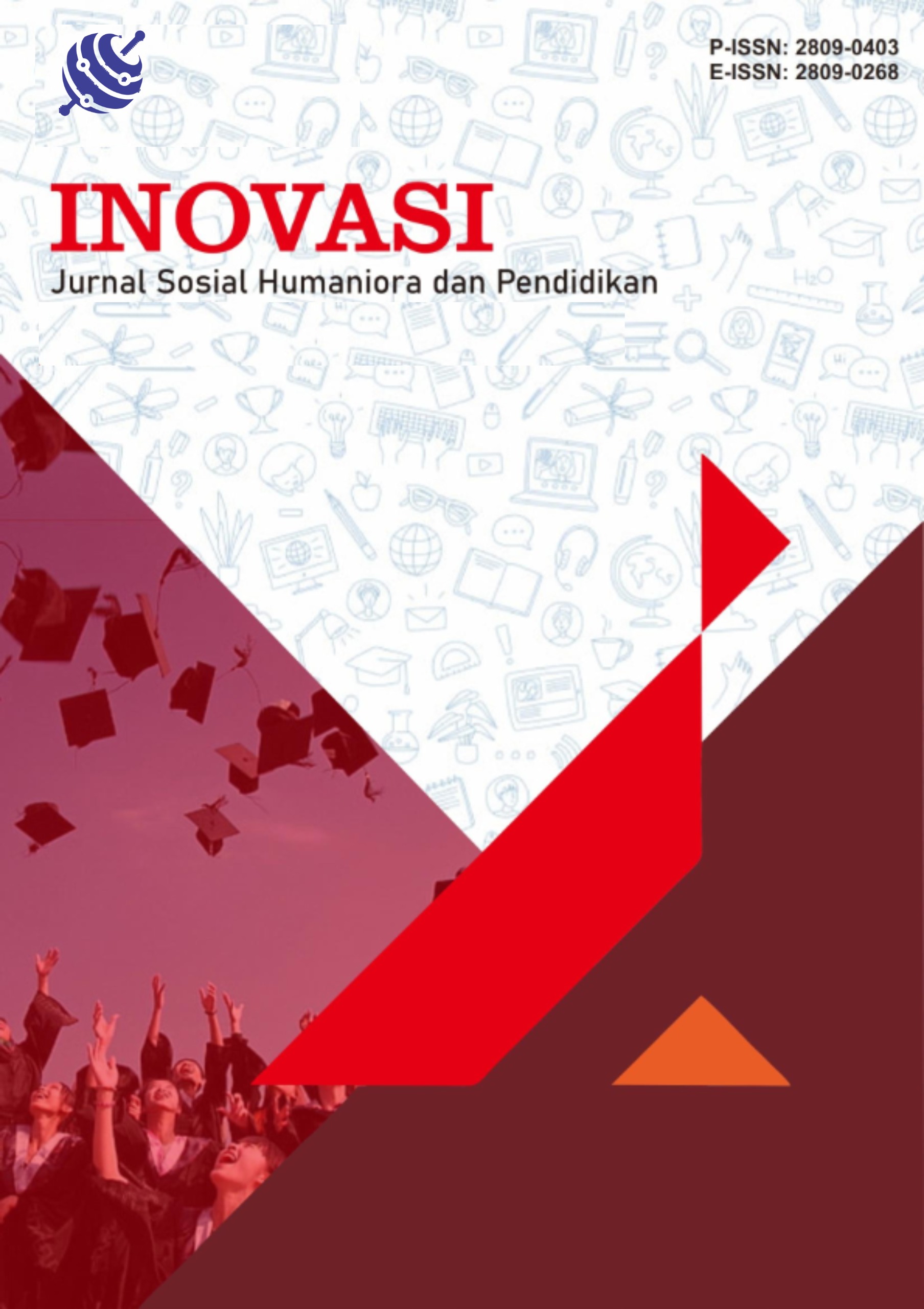Pertunjukan Sere Api Di Desa Gattareng Kecamatan Pujananting Kabupaten Barru
DOI:
https://doi.org/10.55606/inovasi.v4i3.4264Keywords:
Sere api Performance, Bugis Culture, Gattareng VillageAbstract
This study aims to (i) analyze the process of fire performance in Gattareng Village, Pujananting District, Barru Regency. (ii) analyze the dialectic of Bugis and Islamic culture in the Sere api performance in Gattareng Village, Pujananting District, Barru Regency. (iii) analyze the cultural changes contained in the fire sere performance in Gattareng Village, Pujananting District, Barru Regency. This type of research is a qualitative research by presenting data in the form of narrative-descriptive, which aims to provide an in-depth understanding related to the Sere api Performance in Gattareng Village, Pujananting District, Barru Regency by interviewing 7 informants. The data collection techniques in this study are observation, interviews and documentation. As well as using the source triangulation data validity technique. The results of the study show that (i) the performance process which is divided into three main stages of preparation, implementation, and closing shows the depth of cultural meaning and spirituality of the community. The preparatory stage reflects gratitude and well-being through young rice harvests and purification rituals. The performance of the performance, which is characterized by the sound of mortars and a procession of fireworks, depicts the courage and inner strength of the participants, as well as the spiritual transformation that occurs during the ritual. The end of the performance, which is marked by the extinguishing of the fire and the harmony of movement, signifies the completion of the ritual in a sacred way. (ii) This tradition is not just a physical performance, but a ritual that combines traditional values (pangngadereng) with Islamic teachings in a complementary way. No conflict was found between the two; On the contrary, Islamic values provide a spiritual and moral framework for the implementation of rituals, while Bugis culture provides the structure and form of expression of the rite. (iii) The Sere api performance has not undergone significant changes from year to year. The procession is still carried out according to the traditional pattern as a form of respect for the ancestors and a symbol of the community's cultural identity. However, there is flexibility in terms of the time and location of the performance.
References
Afifah, Desi Nur, dan Irawan Irawan. 2021. “Upaya pelestarian kesenian Bantengan di wilayah Prigen Kabupaten Pasuruan (Dalam Perspektif Tindakan Sosial Max Weber).” Jurnal Integrasi dan Harmoni Inovatif Ilmu-Ilmu Sosial 1(5):547–57. doi: 10.17977/um063v1i5p547-557.
Ahimsa-Putra, Heddy Shri, Totok Sumaryanto, Nur Sahid, Surasak Jamnongsorn, Afaf Hasyimy, Sri Wulandari, M. Sirojul Muniir, Nur Ramadani, Nur Iswantara, Aris Wahyudi, Made Darma Putra, Made Georgiana Triwinadi, Surya Farid Sathotho, Philipus Nugroho Hari Wibowo, Yekti Herlina, STKW Surabaya, I. Gede Yudarta, Tri Haryanto, Sri Wulandari, Endah Budiarti, Ridzal Kusdiyatmoko, Mei Artanto, ISI Yogayakrta, Maria Octavia, dan Rosiana Dewi. 2021. Bunga Rampai Kajian Seni Budaya Ragam Perspektif. Unesa University Press.
Ahmad, Irfan. 2011. “Immanent Critique and Islam: Anthropological Reflections.” Anthropological Theory 11(1):107–32. doi: 10.1177/1463499611398188.
Dasari, Fitriana, dan Andi Ihsan. 2022. “Keberlanjutan Pelaku Sere api Desa Gattareng Kabupaten Barru.” Seni Tari, Jurusan Seni Pertunjukan, Fakultas Seni dan Desain, Universitas Negeri Makassar 17.
Empo, Anisa Syania. 2023. “Pola Pewarisan Tari Sere api di Desa Gattareng Kabupaten Barru.” Program Studi Pendidikan Seni, Drama Tari Dan Musik, Institusi Universitas Negeri Makassar.
Istiqomah, Ermina, dan Sudjatmiko Setyobudihono. 2017. “Nilai Budaya Masyarakat Banjar Kalimantan Selatan: Studi Indigenous.” Jurnal Psikologi Teori dan Terapan 5(1):1. doi: 10.26740/jptt.v5n1.p1-6.
Kesuma, Ima. 2015. Napas budaya dari timur Nusantara: sejarah dan sosial budaya masyarakat di Sulawesi dan Pulau Lombok-NTB. Cetakan pertama. Mataram, Lombok: Arga Puji Press.
Lexxy J. Meolong. 1990. Metodologi Penelitian Kualitatif. Kedua. Bandung: PT remaja Rosdakarya.
Nasir, Muhammad, dan Zulfian Arman. 2023. Ilmu Sosial & Budaya Dasar. Pertama. Nasmedia.
Putra, Muhammad Adhitya Hidayat, Muhammad Rezky Noor Handy, Bambang Subiyakto, Rusmaniah Rusmaniah, dan Norhayati Norhayati. 2022. “Identifikasi Nilai Budaya Masyarakat Sungai Jelai Basirih Selatan Sebagai Sumber Belajar IPS.” PAKIS (Publikasi Berkala Pendidikan Ilmu Sosial) 2(2). doi: 10.20527/pakis.v2i2.6221.
Putri, Sulfiana Mansyur. 2015. “Pelaksanaan dan Fungsi Pertunjukkan Sere api Pesta Panen di Desa Bulo-Bulo Kecamatan Pujinanting Kabupaten Barru.” Harmoni: Jurnal Pendidikan Seni Rupa 5. doi: https://doi.org/10.26618/jh.v5i1.11795.
Rahayu, Ani Sri. 2018. ISBD Perspektif Baru Membangun Kesadaran Global Melalui Revolusi Mental. Kedua. Bumi Aksara.
Sabara. 2018. “Islam dalam Tradisi Masyarakat Lokal di Sulawesi Selatan.” Balai Penelitian dan Pengembangan Agama Makassar Volume 4 Nomor 1.
Saebani, Beni Ahmad. 2012. Pengantar Antropologi. Pertama. Bandung: Pustaka Setia.
Sudarwan Danim. 2013. menjadi peneliti kualitatif. kedua. bandung: CV PUSTAKA SETIA.
Syam, Nur dan Aindoble. 2007. Madzhab-Madzhab Antropologi. Cet. 1. Yogyakarta, Surabaya: Lembaga Kajian Islam dan Studi (LKiS) ; Institut Agama Islam Negeri (IAIN) Sunan Ampel.
Verulitasari, Esti, dan Agus Cahyono. 2016. “Nilai Budaya Dalam Pertunjukkan Rapai Geleng Mencerminkan Identitas Budaya Aceh.”
Downloads
Published
How to Cite
Issue
Section
License
Copyright (c) 2025 Jurnal Sosial Humaniora dan Pendidikan

This work is licensed under a Creative Commons Attribution-ShareAlike 4.0 International License.







